Recent Blog Posts
Changes to Federal Trucking Regulations May Endanger Other Drivers
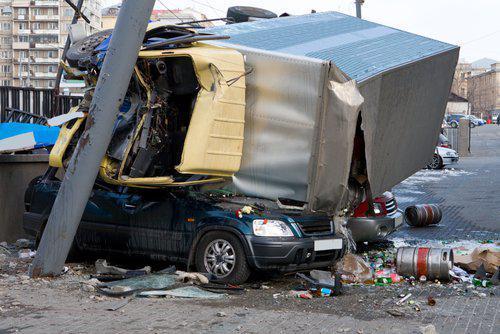 Large trucks pose a unique danger to other drivers on the road. Their massive size makes it harder for their operators to see what is around them, harder for their operators to turn, and harder for their operators to bring them to a stop. Additionally, their extra mass means that large truck accidents can be especially serious. National Highway Transportation Safety Administration data reveals that trucks are responsible for eight percent of all fatal accidents, despite constituting only four percent of all cars on the road.
Large trucks pose a unique danger to other drivers on the road. Their massive size makes it harder for their operators to see what is around them, harder for their operators to turn, and harder for their operators to bring them to a stop. Additionally, their extra mass means that large truck accidents can be especially serious. National Highway Transportation Safety Administration data reveals that trucks are responsible for eight percent of all fatal accidents, despite constituting only four percent of all cars on the road.
Because of these unique dangers, the law imposes certain restrictions on truck drivers. They must get a certain amount of rest over certain periods, and there are limits to the amount of time they can drive consecutively and per week. However, Congress relaxed these federal trucking regulations as part of the recent spending compromise, meaning that other drivers on the road may now be less safe.
Emotional Distress: Legal Claims for the Pain of a Loved One
 It is never easy to go through the loss or severe injury of a loved one in an accident, and no amount of compensation can fully heal them. However, the law does offer a variety of claims to ensure that the careless people responsible for their injuries are held responsible. One important claim that is discussed less than some of the others is the negligent infliction of emotional distress. Claims for negligent infliction of emotional distress allow people to recover for the emotional pain that they suffer from watching their loved one be involved in a severe accident. Yet, it is important for claimants to note that these types of claims are somewhat controversial, so the law places limitations on their use.
It is never easy to go through the loss or severe injury of a loved one in an accident, and no amount of compensation can fully heal them. However, the law does offer a variety of claims to ensure that the careless people responsible for their injuries are held responsible. One important claim that is discussed less than some of the others is the negligent infliction of emotional distress. Claims for negligent infliction of emotional distress allow people to recover for the emotional pain that they suffer from watching their loved one be involved in a severe accident. Yet, it is important for claimants to note that these types of claims are somewhat controversial, so the law places limitations on their use.
Negligent Infliction of Emotional Distress
Truck Driver Substance Abuse and Truck Accidents
 Commercial truck drivers have a demanding job. They face long, lonely hours on the road, and their salary is directly related to how hard they are willing to push themselves to keep driving. Consequently, federal law places a variety of restrictions on how long truck drivers are allowed to stay on the road for, in order to reduce the possibility of truck accidents. Unfortunately, many drivers choose to ignore these restrictions, pushing themselves beyond the legal limits. Even more problematically, worldwide research suggests that many of these drivers rely on illegal substances in order to stave off the fatigue and boredom that comes from that type of driving. Drivers who share the road with these trucks should be sure to keep this type of danger in mind.
Common Types of Truck Driver Substance Abuse
Truck driver substance abuse falls into two main categories, abuse of depressants and abuse of stimulants. Abuse of depressants involves drivers who are using drugs such as marijuana or alcohol when they are behind the wheel. In fact, truck drivers in the United States had the highest incidence of positive tests for alcohol use; 12.5 percent of drivers tested positive. These sorts of drugs can pose a serious danger to drivers sharing the road with truckers because the alcohol and marijuana can impair a driver's concentration, slow their reaction time, and can even cause truckers to fall asleep behind the wheel.
The other type of substance abuse that is common for truck drivers is the abuse of stimulants, drugs like cocaine and amphetamines. Truckers often use these sorts of substances to stave off fatigue and keep driving longer. While the fact that these drugs help keep drivers more alert may seem like a good thing, they come with a host of dangerous side effects. Truck drivers using stimulants behind the wheel may experience dizziness, impaired concentration, altered reaction times, and even hallucinations.
Responding to a Truck Accident
This prevalence of substance abuse among truck drivers adds an extra dimension to the way in which people should respond to trucking accidents. Acquiring evidence of possible substance abuse during the crash can make it easier to prove fault in the case. People should also be aware of the special laws related to substance abuse that apply to truck drivers. For instance, the Federal Motor Carrier Safety Administration has placed a lower legal BAC limit on truck drivers. Rather than the ordinary 0.08 percent legal limit, truck drivers are considered intoxicated if their BAC rises above 0.04 percent.
Trucking accidents can lead to serious injuries because of commercial trucks' massive size. If you have been injured in a trucking accident, and want to learn more about your rights, contact a skilled Milwaukee personal injury attorney today. Our team of lawyers is here to help you fight for the full and fair compensation that you deserve.
Commercial truck drivers have a demanding job. They face long, lonely hours on the road, and their salary is directly related to how hard they are willing to push themselves to keep driving. Consequently, federal law places a variety of restrictions on how long truck drivers are allowed to stay on the road for, in order to reduce the possibility of truck accidents. Unfortunately, many drivers choose to ignore these restrictions, pushing themselves beyond the legal limits. Even more problematically, worldwide research suggests that many of these drivers rely on illegal substances in order to stave off the fatigue and boredom that comes from that type of driving. Drivers who share the road with these trucks should be sure to keep this type of danger in mind.
Common Types of Truck Driver Substance Abuse
Truck driver substance abuse falls into two main categories, abuse of depressants and abuse of stimulants. Abuse of depressants involves drivers who are using drugs such as marijuana or alcohol when they are behind the wheel. In fact, truck drivers in the United States had the highest incidence of positive tests for alcohol use; 12.5 percent of drivers tested positive. These sorts of drugs can pose a serious danger to drivers sharing the road with truckers because the alcohol and marijuana can impair a driver's concentration, slow their reaction time, and can even cause truckers to fall asleep behind the wheel.
The other type of substance abuse that is common for truck drivers is the abuse of stimulants, drugs like cocaine and amphetamines. Truckers often use these sorts of substances to stave off fatigue and keep driving longer. While the fact that these drugs help keep drivers more alert may seem like a good thing, they come with a host of dangerous side effects. Truck drivers using stimulants behind the wheel may experience dizziness, impaired concentration, altered reaction times, and even hallucinations.
Responding to a Truck Accident
This prevalence of substance abuse among truck drivers adds an extra dimension to the way in which people should respond to trucking accidents. Acquiring evidence of possible substance abuse during the crash can make it easier to prove fault in the case. People should also be aware of the special laws related to substance abuse that apply to truck drivers. For instance, the Federal Motor Carrier Safety Administration has placed a lower legal BAC limit on truck drivers. Rather than the ordinary 0.08 percent legal limit, truck drivers are considered intoxicated if their BAC rises above 0.04 percent.
Trucking accidents can lead to serious injuries because of commercial trucks' massive size. If you have been injured in a trucking accident, and want to learn more about your rights, contact a skilled Milwaukee personal injury attorney today. Our team of lawyers is here to help you fight for the full and fair compensation that you deserve.
Motorcycle Accidents: Pursuing the Negligent Driver
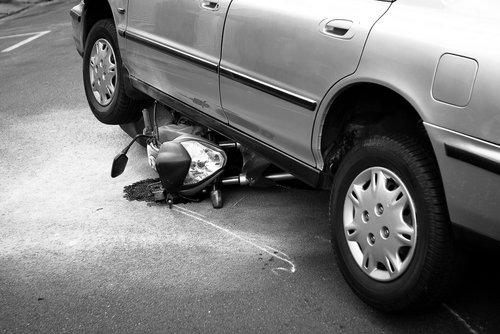 Today, motorcycles are a popular source of enjoyment and entertainment in our society, but they pose unique dangers due to their design. According to the National Highway and Traffic Safety Administration, in the year 2012, 4,957 motorcyclists across the United States suffered fatalities as a result of motor vehicle crashes. In Wisconsin, 118 motorcyclists died in traffic accidents out of 2,720 total motorcyclist accidents, while 2,183 suffered injuries as a result of traffic accidents. Although the number of motorcycle accidents in Wisconsin account for only 1.5 percent of the total motor vehicle accidents across the state, they almost always result in serious injuries and extensive medical bills.
Today, motorcycles are a popular source of enjoyment and entertainment in our society, but they pose unique dangers due to their design. According to the National Highway and Traffic Safety Administration, in the year 2012, 4,957 motorcyclists across the United States suffered fatalities as a result of motor vehicle crashes. In Wisconsin, 118 motorcyclists died in traffic accidents out of 2,720 total motorcyclist accidents, while 2,183 suffered injuries as a result of traffic accidents. Although the number of motorcycle accidents in Wisconsin account for only 1.5 percent of the total motor vehicle accidents across the state, they almost always result in serious injuries and extensive medical bills.
Wrongful Death: Seeking Justice for the Negligent Death of a Family Member
 Wrongful death actions arise when the negligence or intentional act of an individual causes the death of another. Wisconsin law outlines who has the right to bring a claim, the time limits within which the wrongful death claim may be brought, and the types of damage that could be recovered under a wrongful death claim.
Wrongful death actions arise when the negligence or intentional act of an individual causes the death of another. Wisconsin law outlines who has the right to bring a claim, the time limits within which the wrongful death claim may be brought, and the types of damage that could be recovered under a wrongful death claim.
Who Can File a Wrongful Death Lawsuit?
When death is caused by a wrongful or negligent act, the filing of a civil lawsuit is available only when the deceased person could have pursued the personal injury claim had they still been alive. Usually, the family of the deceased individual or the individual’s estate could file a wrongful death lawsuit against the individual or legal entity responsible for the death of the family member. It is not unusual after murder trials for the family of the victim to bring a wrongful death action against the murderer, even if the individual was not convicted of murder.
Bicycle Accident Injuries
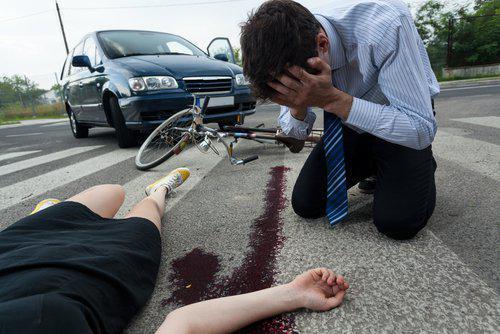 Bicycle accidents, especially ones involving motor vehicles, can result in serious or life-threatening injuries. In Wisconsin, almost every time a bicyclist is involved in a motor vehicle accident, he or she is likely to suffer injuries. In 2012, over 1,100 bicyclists were involved in accidents, and 1,049 suffered injuries while 11 were killed as a result of the accident. This translates to an average of one bicyclist injured every 8.3 hours. As recently as March 24, 2015, a 22-year-old Sheboygan native was riding his bicycle in the morning when a pickup truck collided with him. He suffered injuries as a result of the accident and died the next day.
Bicycle accidents, especially ones involving motor vehicles, can result in serious or life-threatening injuries. In Wisconsin, almost every time a bicyclist is involved in a motor vehicle accident, he or she is likely to suffer injuries. In 2012, over 1,100 bicyclists were involved in accidents, and 1,049 suffered injuries while 11 were killed as a result of the accident. This translates to an average of one bicyclist injured every 8.3 hours. As recently as March 24, 2015, a 22-year-old Sheboygan native was riding his bicycle in the morning when a pickup truck collided with him. He suffered injuries as a result of the accident and died the next day.
Bicyclists and motor vehicle operators are required to obey the rules of the road. Generally, these rules include exercising ordinary care for their own safety and the safety of others. They are also required to obey the traffic laws.
Premises Liability Primer: Who is Responsible and How Do I Recover?
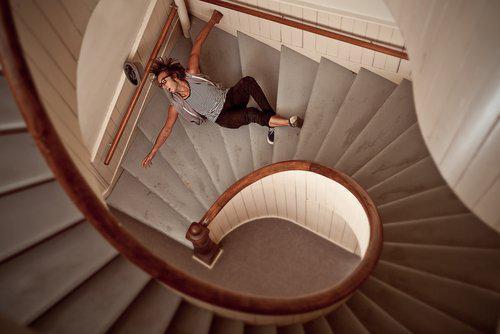 Many of the personal injury accidents that transpire within Wisconsin occur on someone else’s property, either inside or outside a building. These types of accidents are identified as premises liability, cases and they can occur on public or private property when dangerous conditions are present.
Many of the personal injury accidents that transpire within Wisconsin occur on someone else’s property, either inside or outside a building. These types of accidents are identified as premises liability, cases and they can occur on public or private property when dangerous conditions are present.
Dangerous conditions create unreasonable risks of harm. For example, unreasonable risks of harm are found in scenarios involving poorly maintained premises, improperly constructed stairwells, or when premises owners fail to give adequate warning of a dangerous condition. If you, or someone you know, entered a dangerous premise and suffered an injury due to a slip and fall on someone else’s property, you should contact an experienced personal injury attorney as soon as possible. In Wisconsin, the statute of limitations provides only three years from the date of injury to file a claim, thus it is important to act quickly.
Construction Accidents in Wisconsin
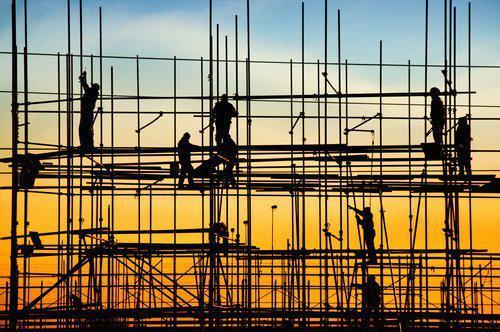 Regardless where a construction site is located, whether it is at a commercial building, private home or an interstate, it is usually a dangerous place to be. Construction work is dangerous because it is physically demanding and it is often performed outside, where workers are exposed to the natural elements. The terrain is not always even, weather is unpredictable and, very often, construction workers change surroundings frequently—they rarely work in the same place for extended periods of time. These factors alone can increase the likelihood of a construction-related injury.
Regardless where a construction site is located, whether it is at a commercial building, private home or an interstate, it is usually a dangerous place to be. Construction work is dangerous because it is physically demanding and it is often performed outside, where workers are exposed to the natural elements. The terrain is not always even, weather is unpredictable and, very often, construction workers change surroundings frequently—they rarely work in the same place for extended periods of time. These factors alone can increase the likelihood of a construction-related injury.
According to the Occupational Safety & Health Administration (OSHA), the four leading causes of injury or death at the worksite across the United States involve falling, being struck by various objects, electrocutions and getting caught between structures or equipment. In the private sector alone, there were over 3,900 work-related deaths in a single year. Approximately 796 of those deaths were related to construction accidents and the leading causes identified above. The largest majority of construction-related deaths occurred due to falls.
Pedestrian Accidents: Not Even Safe While Walking Down the Street
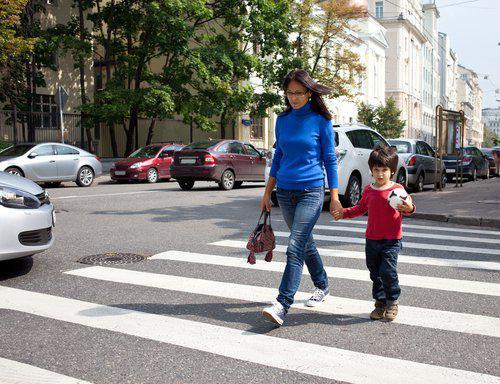 Pedestrians swarm the streets of Milwaukee, using their own two legs to get around town. And while automobile accidents are scary events that result in injuries to everyone involved, when they involve pedestrians, they usually result in serious injuries or even death.
Pedestrians swarm the streets of Milwaukee, using their own two legs to get around town. And while automobile accidents are scary events that result in injuries to everyone involved, when they involve pedestrians, they usually result in serious injuries or even death.
According to the National Highway Traffic Safety Administration in 2013, over 4,700 pedestrians were killed and over 66,000 suffered injuries as a result of a motor vehicle accident across the United States. In Wisconsin alone, according to the Department of Transportation in 2013, over 1,270 pedestrians were involved in motor vehicle accidents. Out of those accidents involving pedestrians, 1,231 suffered injuries while 25 lost their lives.
Playgrounds: Endless Jungles of Entertainment or Hidden Minefields of Injuries
 Playgrounds for children are places meant for fun, laughter and life-long memories. But, some playgrounds can be among the most dangerous places for children to play. There are many activities available to keep children occupied, such as swing sets, monkey bars, slides, ladders, etc. Although these activities and obstacles offer children many different ways to socialize, exercise and avoid boredom, they unfortunately provide ample opportunities for children to suffer severe injuries.
Playgrounds for children are places meant for fun, laughter and life-long memories. But, some playgrounds can be among the most dangerous places for children to play. There are many activities available to keep children occupied, such as swing sets, monkey bars, slides, ladders, etc. Although these activities and obstacles offer children many different ways to socialize, exercise and avoid boredom, they unfortunately provide ample opportunities for children to suffer severe injuries.
According to the United States Consumer Product Safety Commission (CPSC), approximately 200,000 children suffer playground-related injuries each year. The most common injuries sustained at playgrounds involve children falling to the ground from the equipment they are using. In Wisconsin, playground falls are the leading cause of injuries to children between the ages of five and nine. The American Academy of Orthopaedic Surgeons found that the vast majority of injuries suffered by children at playgrounds involve climbing equipment and swings. The types of injuries children suffer range from minor cuts and bruises to fractures and amputations.







